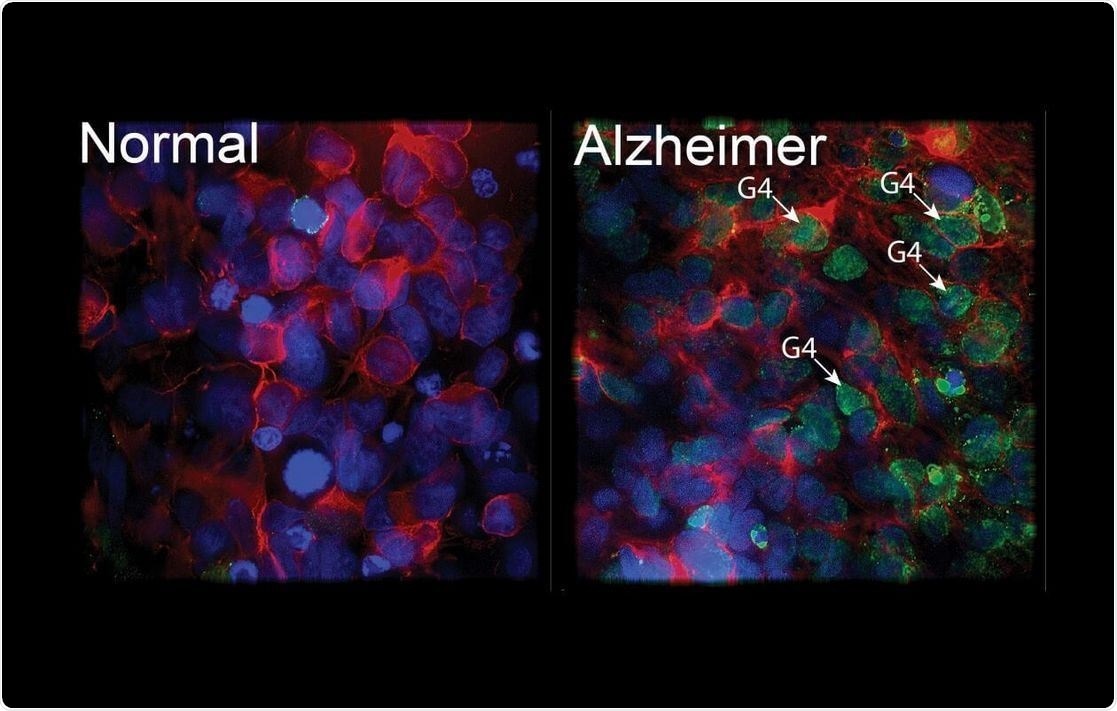The Maisonneuve-Rosemont Hospital Research Centre has taken another step toward interpreting Alzheimer’s disease.

Healthy neurons (left) and Alzheimer’s disease neurons (right): in green, accumulation of G4 structures in Alzheimer’s neurons. Image Credit: University of Montreal.
Gilbert Bernier, a molecular biologist, and professor of neurosciences from the University of Montreal, has identified a new function for the BMI1 gene, which is known to suppress brain aging. The study results have been recently published in the Nature Communications journal.
Bernier was able to determine in his laboratory that the BMI1gene was needed to prevent the DNA of neurons from disorganizing in a specific way, known as G4 structures. A phenomenon like this takes place in the brains of people suffering from Alzheimer’s disease but not in old healthy people.
Hence, the BMI1 gene would offer protection against Alzheimer’s by inhibiting, among other things, the surplus development of G4s that disturb the neural function.
This discovery adds to our knowledge of the fundamental mechanisms leading to Alzheimer’s. There is still no cure for this disease, which now affects nearly one million Canadians. Any advance in the field brings hope to all these people and their families.”
Gilbert Bernier, Molecular Biologist and Professor of Neurosciences, Université de Montréal
In earlier articles reported in the Cell Reports and Scientific Reports journals, professor Bernier had shown that the BMI1 gene expression is particularly decreased in the brains of people affected by Alzheimer’s disease.
He further demonstrated that the inactivation of the BMI1 gene in mice or in cultured human neurons was adequate to recapitulate the entire pathological markers linked to Alzheimer’s disease.
Source:
Journal reference:
Hanna, R., et al. (2021) G-quadruplexes originating from evolutionary conserved L1 elements interfere with neuronal gene expression in Alzheimer’s disease. Nature Communications. doi.org/10.1038/s41467-021-22129-9.